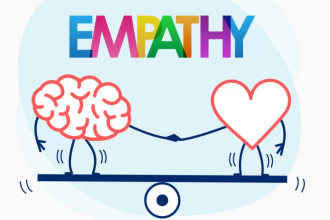Introduction
Therapy—the word alone might bring an image of a comfy couch, a person lying down, and a therapist sitting by, scribbling notes. But times have changed, and so have therapeutic techniques. Enter experiential therapy, a dynamic approach that invites clients to engage in activities, role-playing, and creative expressions. It’s far from traditional, but it’s effective. This blog post will guide therapists and mental health professionals through the fascinating world of experiential therapy training. You’ll discover its benefits, methods, and practical applications in your practice. Ready to transform the way you help clients? Let’s jump in!
- Introduction
- What is Experiential Therapy?
- Why Therapists Should Consider Experiential Therapy
- Core Principles of Experiential Therapy
- Different Techniques Used in Experiential Therapy
- The Role of Creativity in Healing
- How to Get Started with Experiential Therapy Training
- Benefits of Experiential Therapy for Clients
- Real-Life Applications of Experiential Therapy
- Challenges and Considerations
- Measuring the Effectiveness of Experiential Therapy
- Integrating Experiential Therapy into Your Practice
What is Experiential Therapy?
Experiential therapy is all about action. Instead of just talking, clients engage in activities that help them express feelings and process experiences. This method taps into the subconscious, helping to unearth emotions and memories that words alone might not reveal. It’s a powerful tool for addressing trauma, addiction, and other mental health issues.
Why Therapists Should Consider Experiential Therapy
Mental health professionals are always on the lookout for effective methods to help their clients. Experiential therapy offers several advantages:
- Holistic Approach: It addresses both the mind and body.
- Engages Clients: Activities can make therapy more engaging and less intimidating.
- Reveals Hidden Issues: Helps uncover deep-seated emotions and memories.
By integrating experiential therapy into your practice, you can provide a more engaging and effective treatment for your clients.
Core Principles of Experiential Therapy
Before jumping into the specific techniques, it’s essential to understand the core principles of experiential therapy:
- Client-Centered: Therapy should be tailored to the client’s needs and preferences.
- Active Participation: Clients are actively involved in their healing process.
- Expression: Encourages clients to express their thoughts and feelings creatively.
These principles ensure that therapy is both personalized and effective, creating a safe space for clients to explore their emotions and experiences.
Different Techniques Used in Experiential Therapy
Experiential therapy isn’t a one-size-fits-all approach. Various techniques can be employed based on the client’s needs:
- Role-Playing: Clients act out scenarios to explore emotions and behaviors.
- Art Therapy: Use of drawing, painting, or sculpture to express feelings.
- Music Therapy: Incorporating music to help clients express and process emotions.
Each technique offers unique benefits and can be adapted to fit different therapeutic goals.
The Role of Creativity in Healing
Creativity isn’t just for artists. In experiential therapy, creative activities play a crucial role in healing. By engaging in creative expression, clients can access parts of their psyche that are otherwise difficult to reach. Whether it’s through art, music, or role-playing, these activities can help clients process emotions and gain new insights.
How to Get Started with Experiential Therapy Training
Interested in adding experiential therapy to your toolkit? Here’s how you can get started:
- Find a Reputable Training Program: Look for programs that are accredited and have experienced instructors.
- Attend Workshops and Seminars: Gain hands-on experience and learn from experts in the field.
- Join Professional Associations: Connect with other therapists and stay updated on the latest developments.
Training will provide you with the knowledge and skills needed to effectively incorporate experiential therapy into your practice.
Benefits of Experiential Therapy for Clients
Clients can greatly benefit from experiential therapy:
- Enhanced Self-Awareness: Activities can help clients gain a deeper understanding of their emotions and behaviors.
- Improved Emotional Regulation: Engaging in activities can help clients learn to manage their emotions better.
- Strengthened Relationships: Role-playing and other techniques can improve communication and relationship skills.
These benefits can lead to more positive therapy outcomes and lasting change for clients.
Real-Life Applications of Experiential Therapy
Experiential therapy isn’t just theoretical—it’s highly practical. Here are some real-life applications:
- Trauma Recovery: Activities can help clients process traumatic experiences in a safe environment.
- Addiction Treatment: Engaging in creative activities can be a healthy outlet for emotions and reduce cravings.
- Family Therapy: Role-playing can help family members understand each other’s perspectives and improve communication.
These applications demonstrate the versatility and effectiveness of experiential therapy in addressing various mental health issues.
Challenges and Considerations
While experiential therapy offers many benefits, it’s important to be aware of potential challenges:
- Client Resistance: Some clients may be hesitant to engage in activities.
- Therapist Comfort: Therapists need to be comfortable with the techniques they’re using.
- Ethical Considerations: Ensure that activities are appropriate and safe for clients.
By being mindful of these challenges, therapists can create a more effective and ethical therapeutic environment.
Measuring the Effectiveness of Experiential Therapy
How do you know if experiential therapy is working? Here are some ways to measure its effectiveness:
- Client Feedback: Ask clients about their experiences and progress.
- Behavioral Changes: Observe changes in clients’ behaviors and emotional regulation.
- Therapeutic Goals: Track progress toward specific therapeutic goals.
Regular assessment can help therapists refine their approach and ensure that clients are benefiting from the therapy.
Integrating Experiential Therapy into Your Practice
Ready to take the plunge? Here’s how you can integrate experiential therapy into your practice:
- Start Small: Introduce one or two techniques and gradually expand your repertoire.
- Personalize: Tailor activities to fit each client’s needs and preferences.
- Continuous Learning: Stay updated on the latest research and developments in experiential therapy.
Integration doesn’t have to be overwhelming—start with small steps and build from there.
Experiential therapy offers an exciting and effective way to help clients heal and grow. By engaging in creative activities, clients can access deeper emotions and gain new insights. For therapists, incorporating experiential therapy into your practice can enhance your effectiveness and provide more engaging treatment options for your clients. Ready to transform your therapeutic approach? Sign up for experiential therapy training today and join a community of forward-thinking therapists dedicated to creating positive change.













